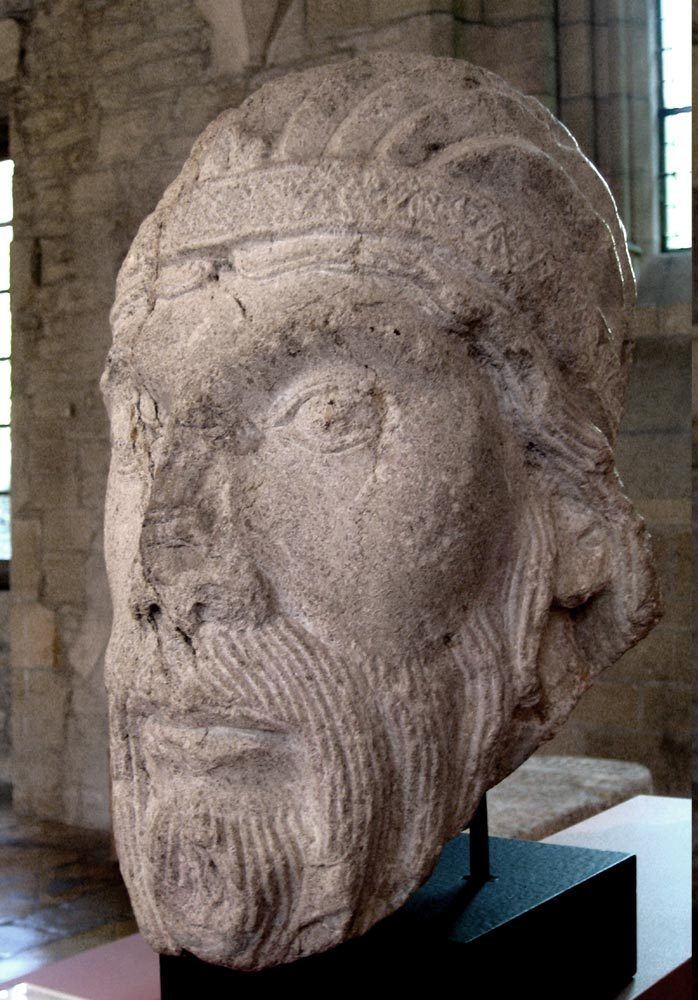Venerated in Roman Catholic Church Attributes dog, key Died Burgundy, France | Feast November 1 Name Benignus Dijon | |
 | ||
Major shrine Basilica of Saint Benigne, Dijon | ||
Places to see in ( Dijon - France ) Cathedrale Saint Benigne de Dijon
Saint Benignus of Dijon (French: Saint Benigne) was a martyr honored as the patron saint and first herald of Christianity of Dijon, Burgundy (Roman Divio). His feast falls, with All Saints, on November 1; his name stands under this date in the Martyrology of St. Jerome. No particulars concerning the person and life of Benignus were known at Dijon. He may have been a missionary priest from Lyon, martyred at Epagny under Aurelian (ruled 270–75), near Dijon.
Contents
- Places to see in Dijon France Cathedrale Saint Benigne de Dijon
- The Passio of Saint Benignus
- Attributes
- References
According to Gregory of Tours the common people reverenced his grave, but Gregory's great-grandfather, Saint Gregory, bishop of Langres (507-539/40), wished to put an end to this veneration, because he believed the grave to belong to a heathen. He went about this in the following manner: announcing that he had learned in a nighttime vision that the burial spot (in a large necropolis outside the Roman city) was in fact the previously overlooked grave of the holy martyr Benignus, the bishop had the tomb in which the sarcophagus lay restored, and he built a basilica over it. Saint Benignus' Abbey developed at the site and joined the Cluniac order. In the early eleventh century a larger church was built by its abbot William of Volpiano (died 1031). The abbey church built by Gregory of Langres was superseded by a Romanesque basilica, which collapsed in 1272 and was replaced by the present Dijon cathedral, dedicated to Benignus, where the shrine survived an earthquake in 1280 and the French Revolution. His sarcophagus can still be seen in the crypt.
In the time of Gregory of Tours there was a sudden appearance of a passio Sancti Benigni narrating the martyrdom of the saint, said by Gregory to have been brought from Italy to Dijon by a pilgrim, but apparently edited at Dijon in the sixth century. These hagiographic accounts have no historical basis; according to them Polycarp of Smyrna (died ca 155) had sent Benignus as a missionary to Dijon, where he had labored as a priest and had finally died a martyr, placed in the persecution under Aurelian (270–275), a possibility chronologically irreconcilable. Louis Duchesne has proved that these acta are at the head of a whole group of legends which arose in the early years of the sixth century and were intended to demonstrate the early the beginnings of Christianity in the cities of that region (Besancon, Autun, Langres, Valence). "They are historically unreliable, and the very existence of some of the martyrs connected with these places is doubtful."
The Passio of Saint Benignus
According to the sixth-century Passio Sancti Benigni, Benignus was a native of Smyrna. Polycarp of Smyrna had a vision of Saint Irenaeus, already dead, in response to which he sent Benignus, as well as two priests and a deacon, to preach the Gospel in Gaul. They were shipwrecked on Corsica but managed to make their way to Marseilles. They made their way up the Rhone River and the Saone. Reaching Autun, they converted Symphorianus, son of the noble Faustus; Symphorianus was later martyred for his faith as Saint Symphorian.
Benignus, now on his own, proselytized openly in different parts of Gaul, and performed numerous miracles despite the persecution of Christians. Denounced to the Emperor Aurelian Arrested at Epagny and put on trial, he refused to sacrifice to pagan deities or to Caesar, and refused to deny Christ. The authorities savagely tortured him, to which he responded with new miracles; he did not change his mind. Eventually, Benignus was clubbed to death with a bar of iron and his heart pierced. "He was buried in a tomb which was made to look like a pagan monument in order to deceive the persecutors".
Attributes
On the seal of the abbey, Benignus of Dijon is depicted as having a dog by his side. He also holds a key.
